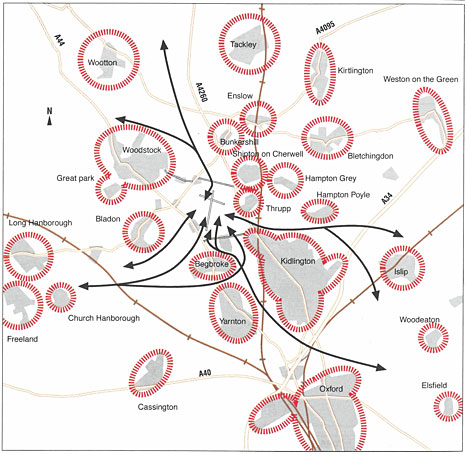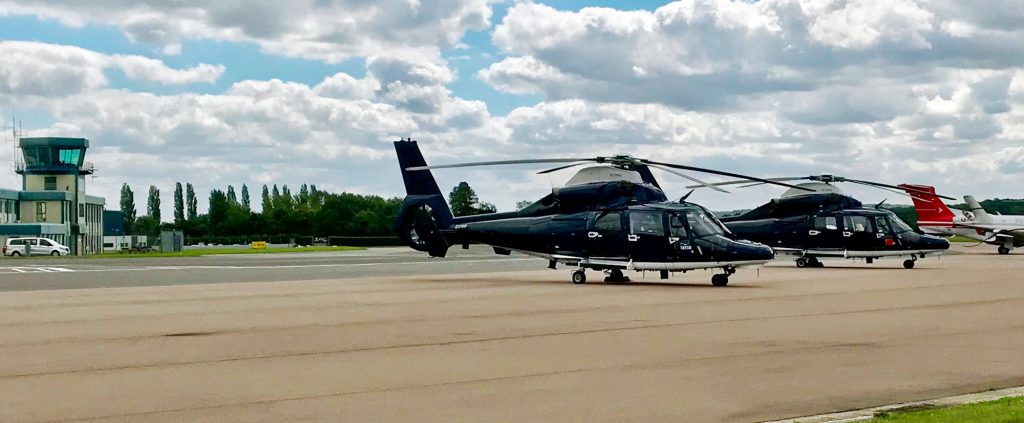
Noise Abatement Policy
Oxford Airport has a Noise Abatement Scheme which periodically gets reviewed in accordance with any traffic mix evolution, or changes with issues and concerns amongst our local neighbours. The scheme is available from our Operations desk via an e-mailed PDF or can be downloaded here.
The airport hosts an Airport Consultative Committee with representatives from local stakeholders and communities surrounding the airport. Noise abatement policy will be discussed and revised through the committee periodically and then re-published as above.
It is assumed and expected that Oxford-based pilots will have familiarised themselves with the scheme by default. For visiting pilots, we encourage them to familiarise themselves with the recommended protocols as is promulgated in the AIP too.
Basic guidance is promulgated within the standard Aeronautical Information Publication (AIP) which in essence recommends the following:
- Pilots are to avoid, where there is no overriding training or Flight Safety requirement, overflying the residential areas, including Blenheim Palace, surrounding Oxford aerodrome.
- After departing from Runway 01, climb ahead to 1000 FT QNH or 1.0 DME I OXF, before turning on course. Pilots carrying out visual departures should endeavour to complete this turn before reaching the Mercury Satellite Station (at 1.5 NM). When turning right, pilots are to avoid overflying the village of Shipton-on-Cherwell.
- After departing from Runway 19, climb straight ahead to 1000 FT QNH or 1 DME I OXF, whichever is earlier, before turning right. Aircraft intending to turn left, climb ahead to 1.5 DME I OXF (IFR) or until south of Yarnton Village (VFR), remaining clear, in all cases, of the Brize Norton CTR.
- After take-off from all other runways, circuit and departing traffic must climb straight ahead to 1000 FT QNH before turning on course. Circuit height for fixed-wing aircraft is 1500 FT QNH.
- Whenever possible aircraft joining the circuit should, subject to ATC approval, plan to join on a base leg, giving way to traffic already established in the circuit. Straight in approaches are to be co-ordinated with ATC by no later than 10 NM so as not to conflict with published instrument final approach tracks.
- Helicopter traffic is subject to standard arrival and departure procedures and routes.
NOTE: Should known pilots or crews be seen to be routinely in breach of the above guidance, they will risk being barred from residency at the airport. Visitors seen to be in breach will be informed of any observed infringements where we are able to communicate with the pilots after the event and a copy of the Noise Abatement Scheme will be forwarded to them.
The primary direction is to avoid overflying the villages within and immediately outside our Air Traffic Zone (a 2nm radius around the airport) with the exception of those that are unfortunately already directly under the approaches (i.e. Tackley) or the fixed wing circuit (i.e. Kidlington). Diagrams are contained within the Noise Abatement Scheme elaborating on recommended routes – in particular for helicopter operations in and out of the airport. Below are some extracted images/slides that give more detail:
- London Oxford Airport Fixed Wing Circuit
- London Oxford Airport Recommended Helicopter Routings to/from the WEST side
- London Oxford Airport Recommended Helicopter Routings to/from the EAST side
- OXF Noise Abatement Map – VFR Fixed Wing Flights
- OXF Noise Abatement Map – VFR Helicopter Flights
A general indicative diagram of the preferred access points, for helicopters in particular, are often promulgated in third party VFR flight guides, such as this:
Noise Abatement Policy Updates and Notices
June 2021 – With an increase in aircraft transiting between Oxford Airport and Enstone Aerodrome, there has been a corresponding increase in aircraft flying over the village of Wootton. We request that all flights avoid overflying Wootton. The easiest way to achieve that is to follow the line of the A44 to the west of the village rather than the river Glyme.
June 2021 – There are continued breaches of the guidance for helicopters using the airport from the east side where they are crossing over the village of Thrupp or Shipton-on-Cherwell. We ask that as per the guidance promulgated above, those accessing to or from the east side do so south of Thrupp and on south of Hampton Gay and Hampton Poyle
June 2021 – A reminder for those on the fixed wing circuit that they are to turn just south of Bletchingdon, unless on an extended downwind leg if instructed by Air Traffic Control
June 2021 – Night Flying & Circuits – we are currently restricting the number of evenings we are able to accommodate those doing night training and circuits this summer and as such capacity is limited and slots need to be organised in advance through Operations and ATC. Regardless of capacity, no such activity will be permitted beyond 22:30.
July 2021 – There have been an increase in aircraft flying directly above Yarnton Village. This is either aircraft on departure from Runway 19 turning too soon to the east – they should turn after passing the village, or it is training aircraft in the main cutting corners on the circuit where they should be turning just before the water works or rail line south west of Yarnton, bringing aircraft south of the main village but close to Yarnton Manor and the church. See the circuit diagram here.



